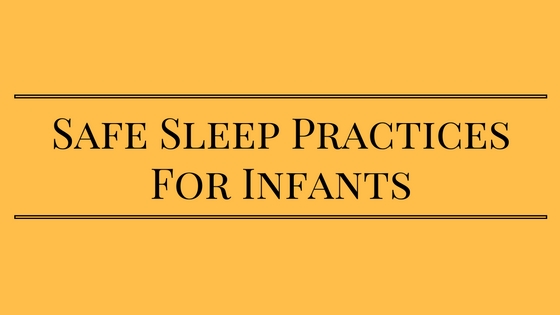With the American Academy of Pediatrics (AAP) updating their recommendations for an infant’s sleeping environment, it’s time to go over safe practices and what you should do to help prevent sleep-related deaths and Sudden Infant Death Syndrome (SIDS). According to AAP approximately 3500 infants die annually in the United States from sleep-related deaths including SIDS. It is also very important to talk to your infant’s caregiver about reducing the risk of SIDS and other sleep-related deaths as many deaths are due to caregivers unaware of the risks.
AAP suggests the following recommendations to reduce the risk of SIDS and other sleep-related infant deaths:
- Always place infants on their back to sleep for every nap or bedtime schedule until the child reaches one year of age. Preemies are at an increased risk of SIDS.
- Always use a firm sleep surface. Using a firm mattress in a safety approved crib covered by a fitted sheet with no other bedding or soft objects reduces the risk of SIDS and suffocation. The sleep area should also be free of hazards such as cords, wires, or blinds due to strangulation risk.
- Breastfeeding is recommended for at least six months.
- It’s recommended that infants sleep in the parents’ room, close to the parents’ bed, but on a separate surface designed for infants, ideally for the first year of life, but at least for the first six months.
- Keep soft objects and loose bedding away from the infant’s sleep area. This will reduce the risk of SIDS, suffocation, entrapment, and strangulation.
- Offer a pacifier at nap time and bedtime. Do not have anything attached to the pacifier. You do not have to reinsert the pacifier once infant is asleep.
- Avoid smoke exposure during pregnancy and after birth. Encourage families to set strict rules for smoke-free homes and cars.
- Avoid alcohol and illicit drug use during pregnancy and after birth.
- Avoid overheating and head coverings in infants. In general, infants should be dressed appropriately for the environment, with nothing greater than one layer more than an adult would wear comfortable.
- Pregnant women should obtain regular prenatal care.
- Infants should be immunized in accordance with recommendations of the AAP and Centers for Disease Control and Prevention. Recent evidence suggests that vaccination may have a protective effect against SIDS.
- Avoid the use of commercial devices that are inconsistent with safe sleep recommendations. Be wary of devices that claim to reduce the risk of SIDS. For example, wedges and positioners.
- Do not use home cardiorespiratory monitors as a strategy to reduce the risk of SIDS. Those devices are sometimes prescribed for use at home to detect apnea or bradycardia and when pulse oximetry is used, decreases in oxyhemoglobin saturation for infants at risk of those conditions.
- Supervised tummy time while infant is awake is recommended to facilitate development and to minimize development of positional plagiocephaly.
- There is no evidence to recommend swaddling as a strategy to reduce the risk of SIDS. Swaddled infants should always be placed on their back.
- Health care professionals, the staff in newborn nurseries and NICUs, and child care providers should endorse and model the SIDS risk-reduction recommendations from birth.
So there you have it! AAPs recommendations for a safe sleep environment. If you want to check out the full report click here.
